Autism Meltdown vs Panic Attack | Autism meltdowns and panic attacks are two distinct experiences that can often be misunderstood or confused with one another. While both involve intense emotional and physical manifestations, it is crucial to differentiate between the two to provide appropriate support and intervention. In this article, we will explore the differences between autism meltdowns and panic attacks, including medical definitions, signs, and management strategies.
Autism Meltdown vs Panic Attack
Autism Meltdown | Definition, Signs, and Management
Definition of Autism Meltdown
An autism meltdown refers to an intense reaction exhibited by individuals on the autism spectrum in response to overwhelming sensory, emotional, or environmental stimuli. It is a response to excessive stress or overload that can result in a loss of emotional control and regulation.
Signs of Autism Meltdown
- Emotional Intensity: During an autism meltdown, individuals may experience intense emotions such as anger, frustration, anxiety, or sadness. These emotions may appear disproportionate to the triggering event.
- Sensory Overload: Individuals with autism often have heightened sensory sensitivities. Meltdowns can be triggered by sensory overload, such as loud noises, bright lights, crowded spaces, or overwhelming textures.
- Communication Difficulties: Effective communication may become challenging during an autism meltdown. Individuals may struggle to express their emotions, needs, or frustrations, leading to increased distress.
- Behavioral Outbursts: Autism meltdowns can involve behavioral outbursts, such as yelling, crying, or physical agitation. Individuals may exhibit repetitive or self-stimulatory behaviors as a coping mechanism.
Management of Autism Meltdown
- Prevention: Recognize and identify early warning signs of an impending meltdown, such as increased agitation, withdrawal, or sensory seeking behaviors. By addressing triggers and implementing preventive strategies, the intensity and duration of meltdowns can be reduced.
- Calming Environment: Create a calming and sensory-friendly environment to support individuals during meltdowns. Offer a quiet space, reduce sensory stimuli, and provide comfort items or tools that promote relaxation, such as weighted blankets or fidget toys.
- Visual Supports: Visual supports, such as visual schedules, social stories, or visual cues, can help individuals with autism understand expectations, transitions, and changes. Clear visuals provide predictability and reduce anxiety.
- Structured Routines: Establish consistent routines and structured schedules to provide a sense of security and stability. Minimize unexpected changes whenever possible and communicate any modifications well in advance.
- Communication Strategies: Support individuals in developing effective communication skills, including alternative methods such as written or visual communication. This allows them to express their emotions and needs during meltdowns.
- Self-Regulation Techniques: Teach and encourage self-regulation techniques that individuals can use during meltdowns. Breathing exercises, mindfulness practices, or sensory self-soothing strategies can help manage emotional intensity and promote self-calming.
Panic Attack
Definition
A panic attack is a sudden and intense episode of fear or apprehension accompanied by physical symptoms. It is a discrete period of intense discomfort that peaks rapidly, typically lasting for several minutes.
Signs of Panic Attack
- Sudden Onset of Fear: Panic attacks often begin abruptly, with a sudden and overwhelming sense of fear, terror, or impending doom. This fear is unrelated to any real or immediate danger.
- Physical Symptoms: Panic attacks involve various physical symptoms, such as a rapid heartbeat, chest pain, shortness of breath, dizziness, trembling, sweating, or feelings of choking.
- Sense of Loss of Control: Individuals experiencing a panic attack may feel a sense of losing control or going crazy. They may fear having a heart attack, suffocating, or dying.
- Avoidance Behaviors: Following a panic attack, individuals may develop avoidance behaviors or anxiety about experiencing another attack. This can significantly impact daily functioning and quality of life.
Management of Panic Attack
- Deep Breathing and Relaxation Techniques: Encourage slow, deep breathing exercises and relaxation techniques, such as progressive muscle relaxation or guided imagery, to help alleviate panic attack symptoms.
- Grounding Techniques: Engage in grounding techniques to bring focus back to the present moment. This can involve sensory activities, such as noticing and describing objects in the environment or focusing on tactile sensations.
- Cognitive Restructuring: Assist individuals in challenging and reframing negative thoughts or catastrophic interpretations that contribute to panic attacks. Cognitive-behavioral therapy (CBT) can be beneficial in identifying and modifying unhelpful thinking patterns.
- Medication: In some cases, healthcare professionals may prescribe medications, such as anti-anxiety medications or antidepressants, to help manage panic attacks. Medication should always be prescribed and monitored by a qualified medical professional.
- Seek Professional Support: If panic attacks significantly impact an individual’s daily life, seeking professional support from a mental health professional experienced in anxiety disorders is recommended. Therapy can provide valuable tools and strategies for managing panic attacks effectively.
The Neurobiological Basis of Meltdowns and Panic Attacks
Understanding the neurobiological underpinnings of meltdowns and panic attacks can provide valuable insights into why they occur and how to manage them effectively.
Autism Meltdowns:
- Sensory Processing Differences: Individuals with autism often have atypical sensory processing, leading to heightened sensitivity to stimuli. This can overwhelm the nervous system, triggering a meltdown.
- Amygdala Overactivity: The amygdala, which processes emotions, may be hyperactive in individuals with autism, making them more prone to intense emotional reactions.
- Executive Function Challenges: Difficulties with executive functioning, such as planning and self-regulation, can make it harder for individuals to manage stress and prevent meltdowns.
Panic Attacks:
- Fight-or-Flight Response: Panic attacks are linked to the activation of the sympathetic nervous system, which triggers the fight-or-flight response. This results in physical symptoms like rapid heartbeat and sweating.
- Neurotransmitter Imbalances: Imbalances in neurotransmitters, such as serotonin and GABA, may contribute to the onset of panic attacks.
- Cognitive Factors: Catastrophic thinking patterns and heightened anxiety sensitivity can exacerbate panic attacks.
Practical Implications: Understanding these biological factors can help tailor interventions. For example, sensory accommodations may be more effective for meltdowns, while cognitive-behavioral techniques may be better suited for panic attacks.
Differentiating Autism Meltdowns vs. Panic Attacks: A Deep Dive
While autism meltdowns and panic attacks may share some overlapping symptoms, such as intense emotional and physical reactions, they are fundamentally different experiences with distinct causes, triggers, and management strategies. Understanding these differences is crucial for providing appropriate support and intervention. Below, we explore the key distinctions between autism meltdowns and panic attacks in greater depth, offering detailed insights and practical advice.
1. Triggers: What Sets Them Apart?
Autism Meltdowns:
Autism meltdowns are typically triggered by sensory overload or overwhelming environmental stimuli. These triggers are often external and can include:
- Sensory Sensitivities: Loud noises, bright lights, strong smells, or uncomfortable textures can overwhelm the individual’s sensory system.
- Changes in Routine: Unexpected changes or disruptions to a predictable schedule can cause significant stress.
- Communication Challenges: Difficulty expressing needs or understanding others can lead to frustration and emotional overload.
- Social Demands: Situations that require complex social interactions, such as group activities or crowded spaces, can be overwhelming.
Key Insight: Meltdowns are often a response to the individual’s inability to process or cope with external stimuli, making them more predictable in certain contexts.
Panic Attacks:
Panic attacks, on the other hand, are often triggered by internal factors and may occur spontaneously without an obvious external cause. Common triggers include:
- Anxiety Disorders: Underlying anxiety conditions, such as generalized anxiety disorder (GAD) or panic disorder, can predispose individuals to panic attacks.
- Stressful Thoughts: Catastrophic thinking or irrational fears can escalate into a panic attack.
- Physical Sensations: Symptoms like a racing heart or shortness of breath can trigger a fear response, leading to a panic attack.
- Trauma or Phobias: Past traumatic experiences or specific phobias (e.g., fear of heights or enclosed spaces) can act as triggers.
Key Insight: Panic attacks are often linked to the individual’s internal emotional state and thought patterns, making them less predictable and more sudden in onset.
2. Context: Where and When Do They Occur?
Autism Meltdowns:
Meltdowns are more likely to occur in specific contexts related to the individual’s sensory sensitivities or communication challenges. For example:
- Sensory-Rich Environments: Crowded malls, noisy classrooms, or brightly lit spaces can trigger meltdowns.
- Transitions: Moving from one activity to another, especially if unexpected, can cause distress.
- Social Situations: Interactions that require complex social skills, such as group discussions or parties, may lead to meltdowns.
Key Insight: Meltdowns are often situational and tied to the individual’s immediate environment or circumstances.
Panic Attacks:
Panic attacks can occur in various situations, often without a clear connection to the environment. They may happen:
- At Rest: While relaxing at home or even during sleep.
- In Neutral Settings: In places that are not inherently stressful or overwhelming.
- During Routine Activities: While driving, shopping, or engaging in everyday tasks.
Key Insight: Panic attacks are less tied to specific environments and more related to the individual’s internal state, making them harder to anticipate.
3. Duration: How Long Do They Last?
Autism Meltdowns:
The duration of an autism meltdown can vary significantly, ranging from minutes to hours, depending on:
- The Intensity of the Trigger: More overwhelming stimuli may lead to longer meltdowns.
- The Individual’s Coping Skills: Those with better self-regulation strategies may recover more quickly.
- Environmental Support: A calming and supportive environment can help shorten the duration.
Key Insight: Meltdowns often subside once the individual is removed from the triggering environment or provided with appropriate support.
Panic Attacks:
Panic attacks typically peak within a few minutes and subside shortly afterward, usually lasting no more than 10-30 minutes. However, the aftereffects, such as fatigue or lingering anxiety, can persist for hours.
Key Insight: While panic attacks are shorter in duration, their intensity can make them feel overwhelming and exhausting.
4. Response to Comfort: What Helps?
Autism Meltdowns:
Individuals experiencing an autism meltdown often respond positively to specific strategies tailored to their sensory and emotional needs. These may include:
- Sensory Accommodations: Providing noise-canceling headphones, weighted blankets, or a quiet space can help regulate the sensory system.
- Visual Supports: Using visual schedules or social stories can provide clarity and reduce anxiety.
- Calming Techniques: Deep pressure, rocking, or other sensory-based activities can promote relaxation.
- Predictable Routines: Maintaining a consistent schedule and minimizing unexpected changes can prevent meltdowns.
Key Insight: Meltdowns are often managed by addressing the external triggers and providing sensory and emotional support.
Panic Attacks:
Individuals having a panic attack may find it challenging to find immediate comfort due to the intense physical and emotional symptoms. However, certain strategies can help:
- Grounding Techniques: Focusing on the present moment through sensory activities, such as describing objects in the environment or holding a comforting item, can reduce panic.
- Deep Breathing: Slow, controlled breathing can help regulate the nervous system and reduce physical symptoms.
- Cognitive Restructuring: Challenging catastrophic thoughts and reframing them in a more positive light can alleviate anxiety.
- Professional Support: Therapy, such as cognitive-behavioral therapy (CBT), can provide long-term strategies for managing panic attacks.
Key Insight: Panic attacks require techniques that address both the physical symptoms and the underlying anxiety.
5. Emotional and Behavioral Manifestations
Autism Meltdowns:
During a meltdown, individuals may exhibit:
- Intense Emotions: Anger, frustration, sadness, or anxiety that may seem disproportionate to the situation.
- Behavioral Outbursts: Yelling, crying, or physical agitation.
- Repetitive Behaviors: Self-stimulatory actions, such as hand-flapping or rocking, as a coping mechanism.
- Communication Difficulties: Struggling to express needs or emotions, leading to increased distress.
Key Insight: Meltdowns are often a response to overwhelming stimuli and may involve a loss of emotional control.
Panic Attacks:
During a panic attack, individuals may experience:
- Sudden Fear: An overwhelming sense of fear, terror, or impending doom.
- Physical Symptoms: Rapid heartbeat, chest pain, shortness of breath, dizziness, or sweating.
- Cognitive Distortions: Fear of losing control, going crazy, or dying.
- Avoidance Behaviors: After a panic attack, individuals may avoid situations or places they associate with the attack.
Key Insight: Panic attacks are characterized by intense fear and physical symptoms, often accompanied by catastrophic thinking.
6. Long-Term Management Strategies
For Autism Meltdowns:
- Sensory Diets: Regularly incorporating sensory activities, such as swinging or deep pressure, can help regulate the nervous system.
- Social Skills Training: Teaching individuals how to recognize and communicate their emotions can reduce frustration.
- Environmental Modifications: Creating sensory-friendly spaces at home, school, and work can minimize triggers.
For Panic Attacks:
- Lifestyle Changes: Regular exercise, a balanced diet, and adequate sleep can improve overall mental health.
- Mindfulness Practices: Incorporating mindfulness and meditation into daily routines can help manage stress and anxiety.
- Therapy: Cognitive-behavioral therapy (CBT) can provide tools for managing panic attacks and reducing their frequency.
While autism meltdowns and panic attacks may appear similar at first glance, they are distinct experiences with unique triggers, contexts, durations, and responses to comfort. Understanding these differences is essential for providing appropriate support and intervention. By tailoring strategies to the individual’s specific needs, caregivers, educators, and professionals can help individuals navigate these challenging experiences and improve their overall well-being. With increased awareness and effective management, we can create a more supportive and inclusive environment for all.
The Role of Co-Occurring Conditions
Many individuals with autism also experience co-occurring conditions, such as anxiety disorders, which can complicate the differentiation between meltdowns and panic attacks.
Anxiety in Autism:
- Prevalence: Up to 40% of individuals with autism also have an anxiety disorder, which can increase the likelihood of both meltdowns and panic attacks.
- Overlap in Symptoms: Anxiety can exacerbate sensory sensitivities, making it harder to distinguish between a meltdown and a panic attack.
- Impact on Daily Life: Co-occurring anxiety can make it more challenging to manage stress and regulate emotions, leading to more frequent or severe episodes.
Strategies for Managing Co-Occurring Conditions:
- Integrated Therapy: Combining autism-specific interventions with anxiety management techniques, such as CBT, can address both conditions simultaneously.
- Medication: In some cases, medication may be prescribed to manage anxiety symptoms, reducing the frequency of panic attacks and meltdowns.
Understanding the differences between Autism Meltdown vs Panic Attack is crucial for providing appropriate support and intervention. By recognizing the unique characteristics, signs, and management strategies for each, individuals can receive tailored assistance that addresses their specific needs. Remember, seeking professional guidance is essential for accurate diagnosis and personalized care. With increased awareness and effective management, we can help individuals navigate these challenging experiences and improve their overall well-being.



